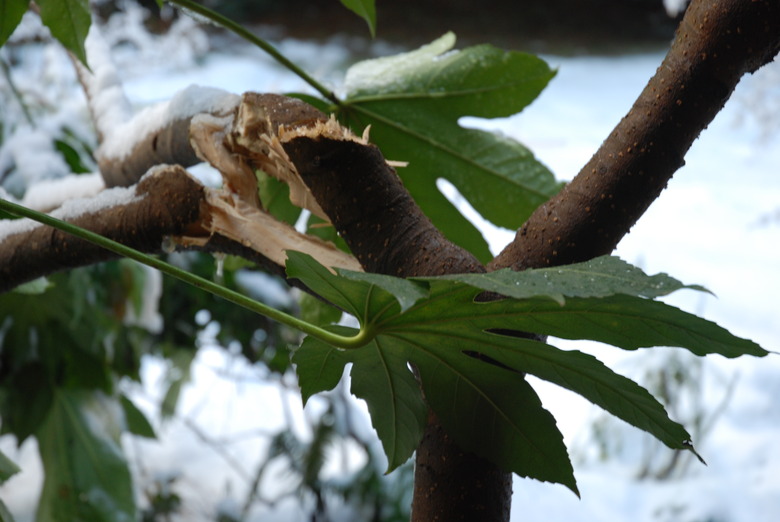How To Prune A Fatsia Japonica
Things Needed
- Pruners
- Pruning saw
- Garden shears
- Goggles
- Wheelbarrow
Warning
When pruning a large Fatsia japonica, always wear protective goggles. The seed casings from this plant are very sharp and can get into your eyes.
Fatsia japonica is also called the Japanese aralia. It is loved for its large, bold evergreen foliage that creates a tropical look in the landscape. This plant also develops unusual white ball-type flowers in December, making it a great winter interest plant. Fatsia japonica is available in two variegated forms with white coloration throughout the leaves. Though it is classified as a shrub, it can be allowed to develop into a small tree. Left to grow, it develops multiple woody trunks that change the entire look of the plant. Kept smaller, it remains a rounded shrub. Regardless of the chosen pruning style it is an attractive useful landscape plant.
- Fatsia japonica is also called the Japanese aralia.
- This plant also develops unusual white ball-type flowers in December, making it a great winter interest plant.
Pruning Fatsia Japonica
Step 1
Choose a pruning style. Decide whether you want to reduce the overall size of the plant or train it into a multi-stemmed small tree. It can be kept as small as five to six feet tall or can be allowed to grow to 12 feet. It will widen over time and individual trunks can be removed to keep the plant narrower.
Step 2
Prune your Fatsia japonica in the spring. Remove dead limbs, twigs and foliage. The wood of this plant is brittle, so use caution when bending the limbs. Pruners work well for all but the trunk of mature plants. Use a small pruning saw to remove larger limbs. Cuts can be made flush to the trunk since this is technically a shrub.
- Decide whether you want to reduce the overall size of the plant or train it into a multi-stemmed small tree.
- Cuts can be made flush to the trunk since this is technically a shrub.
Step 3
Clean up fallen debris. A clean growing environment around your shrub will discourage insects and diseases. Fatsia japonica will drop more leaves throughout the growing season, so regular cleanup is recommended. Fatsia japonica blooms in December and the spent flower heads should be trimmed away in the spring.
Step 4
Prune again in late summer. This is a fast-growing plant and may need a second pruning if you want to keep it small. If it is being trained into a small tree, only the yellow leaves will need trimming in summer. Do any late pruning before the weather turns cold to allow cuts to heal before winter.
- A clean growing environment around your shrub will discourage insects and diseases.
- If it is being trained into a small tree, only the yellow leaves will need trimming in summer.
References
- Sunset Western Garden Book, Sunset Books, 2007
